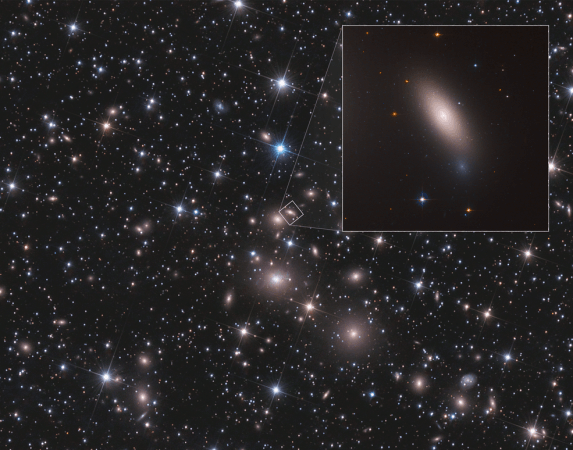Nasa is training the Hubble Space Telescope toward an ancient relic galaxy, close to the Milky Way, about 240 million light-years away. This galaxy has remained unchanged for the last 10 billion years.
Nasa says that this island in the cosmos can provide valuable insights into how galaxies formed and evolved in the early years of galaxy formation. Called NGC 1277, it is a galaxy that, according to the space agency, started off quite actively, churning out stars about a 1,000 times faster than the Milky Way today. However, it also fizzled out quite fast and the stars that gave birth to new stars grew old and red.
While there have been multiple sightings of relic galaxies in the past, this is the first conclusive one to have been found nearby, says Nasa. The more distant ones just show up as red dots to Hubble in its deep sky images, but this one is close enough to see clearly and actually study in detail.

The NGC 1277 is a small galaxy -- about one quarter the size of the Milky Way, yet it has more stars in its system. This can happen to about one in every 1,000 galaxies found, notes the report.
One of the reasons why the NGC 1277 is considered a relic is because it shows what galaxies were like in the early universe, says Nasa. The entire galaxy is composed, almost entirely of stars that are aging and has remained that way for over 10 billion years.
Astronomers call such galaxies "red and dead" because star formation has ceased and there is no activity recorded, as evidenced by the globular reddish clusters that swarm around it.
Another indicator that the galaxy is nothing more than a relic is the lack of blue clusters, which show growth and absorption of new galaxies. One of the reasons for its lack of galaxy gobbling, notes Nasa, is the speed at which it is moving. At 3.2 million km, NGC 1277 is moving too fast to eat other galaxies or absorb stars, or even pull in gases to fuel star formation, notes the report.
By contrast, the Milky Way has about 180 blue and red clusters, constantly gobbling up any star system of a smaller galaxy that passes by.
All this has led to the center of the galaxy to get hot and stay hot. So hot that the intergalactic gases cannot cool down enough to condense and form stars, says Nasa.


















